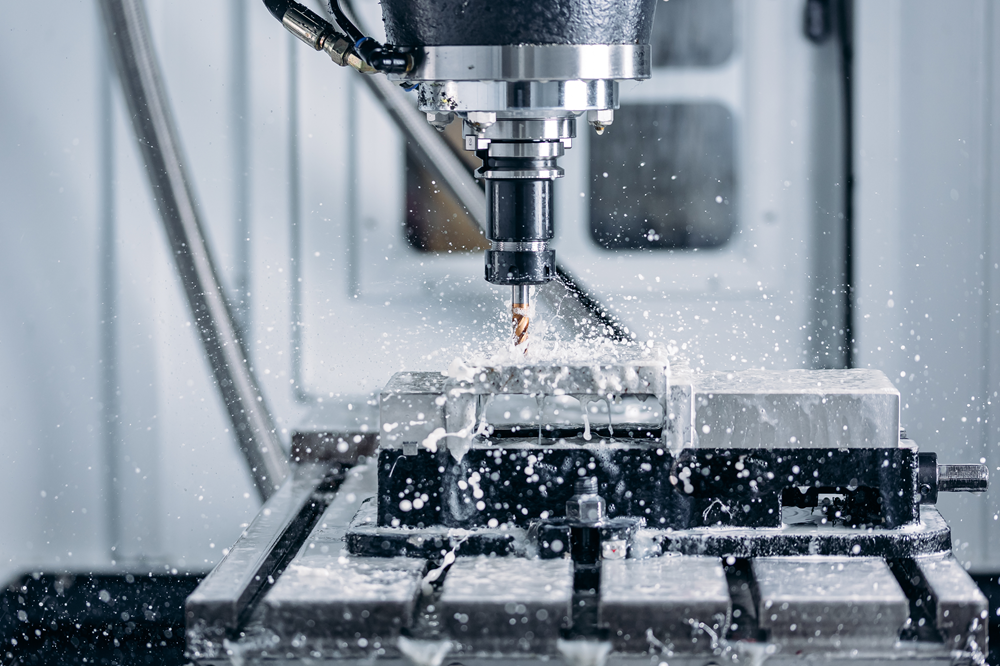AI is revolutionizing the way industries achieve efficiency and precision. Metalworking and manufacturing are no exception, and these industries are investing heavily in it.
A recent study predicts a CAGR of 45.6% in AI-driven manufacturing technology over the next few years, from $3.2 billion in 2023 to $20.8 billion in 2028. Why? Because the benefits of AI in metalworking — from the production of uniform parts at scale with minimal error to improved worker safety — are too valuable to deny.
Keep reading to learn how to benefit from AI in manufacturing by leveraging your operational data.
Key Applications of AI in Manufacturing Processes
Machine learning is the branch of AI with the most applications for metalworking and manufacturing.
Machine learning in manufacturing uses mathematical data models to help computers learn and improve automatically. Humans create the models, and AI does much of the rest. Here are four examples.
#1: Process Optimization
AI optimizes metalworking processes like cutting, punching, and welding.
Computer Numerical Control (CNC) machines use a computer program to automate machine movements. AI helps CNC machines make those movements even more precise by charting the most efficient route for the cutting tool. Thanks to AI, the cutting tool “learns” to move at different speeds based on the type of metal it will receive.
Besides precisely measured parts, another benefit is less waste of raw materials. You’ll reject fewer (if any) parts due to faulty production or human error.
#2: Predictive Maintenance
AI can monitor machine performance, alerting you to the slightest disruption in efficiency.
Normally, if a CNC machine breaks down unexpectedly, it can take time to isolate the problem, order a replacement part, and install it. This downtime could mean your production stalls, delaying shipments and creating backlogs.
The same AI algorithms that help the CNC machine understand how to maximize efficiency also help it recognize inefficiency. You’ll receive a notification as soon as a process starts breaking down.
The benefit? Catching and fixing a small inefficiency early will be less expensive than fixing a bigger inefficiency down the line.
#3: Quality Control and Inspection
AI in quality control helps you detect tiny irregularities in manufactured parts, such as cracks, scratches, and color deviations. These irregularities can lead to defective products or safety risks. With AI, you’ll see a boost in product consistency, delighting your customers, protecting your bottom line, and increasing safety.
Intel is investing in AI-powered machine vision to detect these irregularities. A computer first scans thousands of sample images or parts. AI-powered software then helps the computer recognize the most minute deviations from product specifications.
#4: Worker Safety Through Automated Robots
Manufacturers have started to use AI-guided robots to handle repetitive, hazardous, or precision-heavy tasks. These robots enhance worker safety and increase workplace productivity.
Amazon is famous for developing a robot arm called Robin that uses AI algorithms to identify and sort packages by weight and destination. These algorithms use data from highly sensitive cameras, sensors, and grippers.
Robin protects workers from injuries related to repetitive lifting and stacking. In a more industrial setting, robot arms can perform tasks in extremes of heat or cold, protecting workers from hazardous conditions and potential harm.
Challenges and Considerations of Adopting AI in Manufacturing
AI can provide huge benefits to manufacturing operations. But adopting it can have implications for your budget and personnel.
Potentially High Initial Costs to Implement AI
Implementing AI in manufacturing requires three major cost considerations.
First is installing Internet of Things (IoT) sensors on or near equipment. These sensors gather the data AI systems must “learn” to start automating processes. They can cost up to thousands of dollars each.
For example, vibration sensors are critical for predictive maintenance. A robot arm that vibrates excessively might have worn-out bearings or loose bolts in need of replacement. The data sensors gather helps the AI understand the difference between acceptable and excessive vibration.
Second, AI systems can only understand data stored in specific formats. You may need to invest in data-storage platforms built especially for AI deployments.
The final cost is AI model training. Someone needs to create the algorithms that allow AI to understand and use the data gathered from IoTs.
Shifting Roles for Workers
AI has the potential to create new roles in manufacturing and metalworking environments. AI systems still need human oversight,, leading to the creation of employment opportunities like:
- Technicians to monitor the IoT sensors responsible for gathering data.
- IT professionals who can successfully communicate industry-specific needs with your AI service provider.
The challenge is not finding enough qualified employees to fill these roles. According to a 2023 study from labor-analytics firm Lightcast, job postings for AI-related roles soared 1,848% in 2023 over 2022. You may need to boost funding to human resources so they can better vet, hire, and train workers for these new roles.
Prepare Your Facility for AI in Manufacturing
The number of AI applications in manufacturing and metalworking will only increase. If you haven’t invested in AI, staying competitive in a global market will become increasingly difficult.
Whichever applications you adopt, one of the best ways to prepare for them is to take stock of your data. The higher your data quality, the more your investments in AI will pay off.
To learn more about the types of manufacturing data you should prioritize for AI, read this article.

